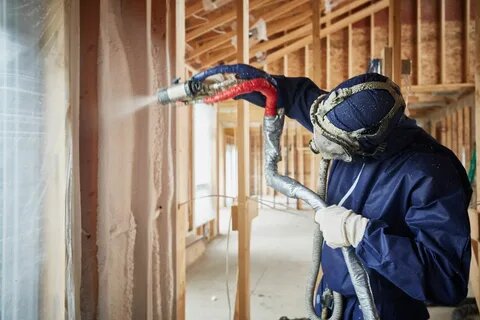
Agricultural spray foam is becoming an essential solution for farmers and landowners looking to enhance their agricultural operations. This versatile insulation material provides excellent thermal resistance, which can help maintain optimal temperatures for crops, reduce energy costs, and improve overall efficiency. In this guide, we’ll break down the process of applying agricultural spray foam into five simple steps, ensuring you can harness its benefits in no time.
Understanding Agricultural Spray Foam
Before diving into the application process, it’s essential to understand what spray foam agriculture is and its advantages. This type of insulation is typically made from polyurethane or similar materials and is sprayed onto surfaces, creating a seamless barrier that prevents air and moisture infiltration. By utilizing agricultural spray foam, farmers can create a more controlled environment for their livestock and crops, ensuring better growth and productivity.
Why Choose Agricultural Spray Foam?
Agricultural spray foam offers several benefits, especially for those located in areas like Sherman, TX, and surrounding regions such as Caddo Mills, Commerce, Trenton, Van Alstyne, and Whitesboro. Some advantages include:
- Energy Efficiency: By providing excellent insulation, it reduces the need for additional heating or cooling, leading to significant savings on energy costs.
- Moisture Control: The foam acts as a barrier against moisture, which can lead to mold and mildew growth, particularly in humid areas.
- Increased Comfort: Maintaining a consistent temperature is crucial for livestock and crops, making spray foam agriculture an invaluable asset.
Step 1: Prepare the Area
The first step in applying agricultural spray foam is preparing the area. This involves cleaning the surfaces to remove dirt, dust, and any debris that may hinder adhesion. Ensure the area is dry and clear of any contaminants. If you’re working in Sherman or nearby locations, consider weather conditions. It’s best to apply the foam when temperatures are above 50°F for optimal adhesion and curing.
Step 2: Gather Your Materials
For the successful application of spray foam agriculture, you’ll need a few key materials:
- Spray Foam Kits: These are readily available at hardware stores or online.
- Protective Gear: This includes gloves, goggles, and a mask to ensure safety during the application.
- Equipment: A spray gun is necessary for applying the foam evenly.
Having all your materials ready will help streamline the process, making it efficient and effective.
Step 3: Apply the Agricultural Spray Foam
Once the area is prepared and your materials are ready, it’s time to apply the spray foam agriculture. Start by shaking the foam canister thoroughly, then attach it to the spray gun. Hold the gun at a slight angle and spray the foam onto the surface in a continuous motion. Aim for even coverage, working in small sections to ensure the foam expands correctly.
When applying in a location like Sherman, TX, take into account any local environmental factors that may affect the foam’s curing process, such as humidity and temperature. Make sure to allow the foam to cure as per the manufacturer’s instructions.
Step 4: Trim Excess Foam
After the spray foam agriculture has fully cured, you may notice some excess material around the edges. Using a utility knife, carefully trim away any excess foam for a clean, professional finish. This step is crucial, especially if you’re applying the foam in spaces where aesthetics matter, such as barns or storage facilities.
Step 5: Conduct a Final Inspection
The last step is to conduct a final inspection of the applied foam. Look for any areas that may require touch-ups or additional insulation. Ensure that the foam has adhered correctly and that there are no gaps or imperfections. If you find any issues, apply a second layer of foam as needed.
The Benefits of Professional Help
While applying spray foam agriculture may seem straightforward, hiring a contractor for the job can ensure a flawless application. Professionals have the expertise and equipment to handle the job efficiently, especially in areas like Sherman, TX, where environmental factors can complicate the process.
They also follow safety protocols and regulations, minimizing any risks involved in the application. Investing in professional services can save time and provide peace of mind, knowing the job is done correctly.
FAQs
Q1: How long does spray foam agriculture take to cure?
A1: Curing time varies based on environmental conditions but generally takes about 24 hours for the foam to fully set.
Q2: Can spray foam agriculture be applied in cold weather?
A2: It’s best to apply spray foam when temperatures are above 50°F for optimal adhesion and performance.
Q3: Is spray foam agriculture safe for crops and livestock?
A3: Yes, once fully cured, spray foam agriculture is safe and can help create a healthier environment for both crops and livestock.
Q4: How much spray foam do I need for my application?
A4: The amount needed depends on the area size and the thickness of insulation desired. It’s advisable to consult with a professional for accurate estimates.
Q5: What maintenance does spray foam agriculture require?
A5: Generally, spray foam agriculture is low maintenance. Regular inspections to check for any damage or wear are recommended.
Conclusion
Applying agricultural spray foam is a straightforward process that can yield significant benefits for your agricultural operations. By following these five simple steps, you can ensure a successful application that enhances energy efficiency, moisture control, and comfort for your crops and livestock.
If you’re located in Sherman, TX, or surrounding areas like Caddo Mills, Commerce, Trenton, Van Alstyne, and Whitesboro, consider reaching out to a qualified contractor to assist you in this endeavor. For more information or assistance, call Spray Tex Insulation at (903) 505-6326. Embrace the advantages of spray foam agriculture today!





